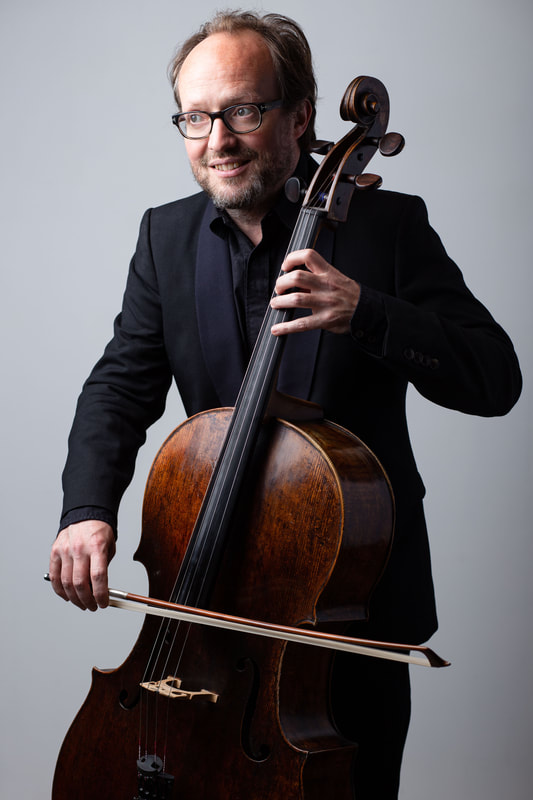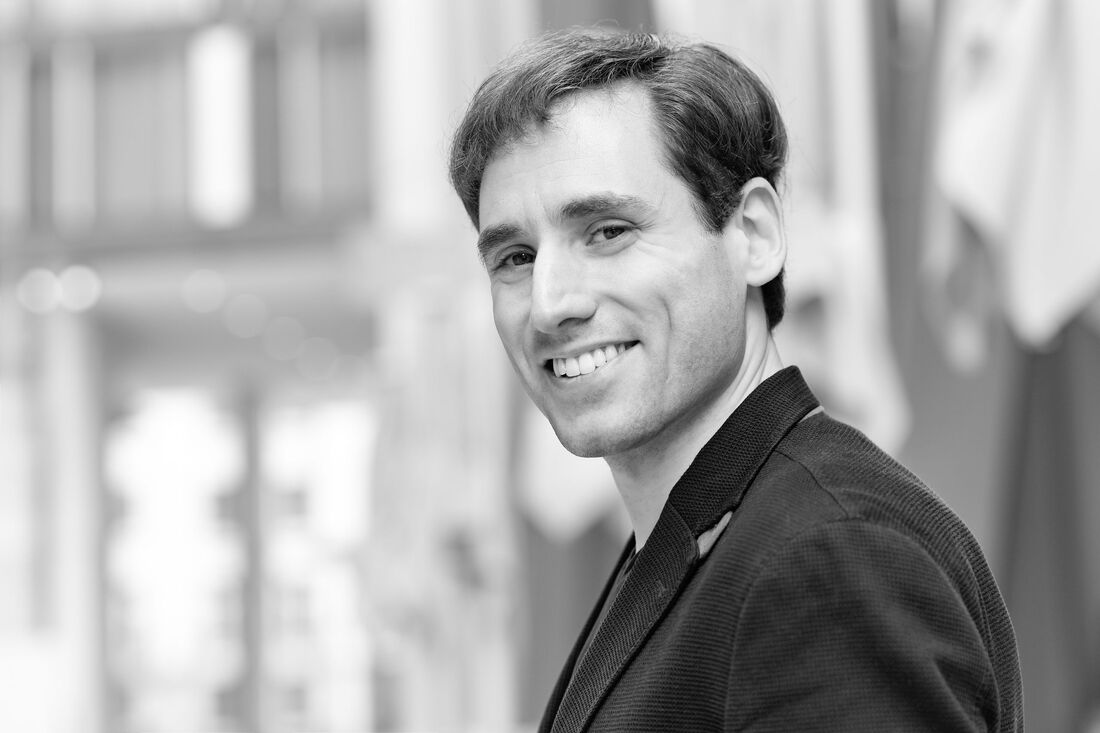|
Co-founder and co-director of the Charlottesville Chamber Music Festival and Charlottesville native Raphael Bell enjoys a varied career as a principal cellist, chamber musician, teacher, and festival director. He is currently principal cello of the Antwerp Symphony Orchestra in Belgium and co-Artistic Director of La Loingtaine in Montigny-sur-Loing, France. As a chamber musician he has performed at Wigmore Hall, Queen Elizabeth Hall, Salle Gaveau, Berlin Philharmonie, Köln Philharmonie, Luzerner Theater, Tokyo Suntory Hall, and Kyoto Concert Hall, and at festivals including Seattle Chamber Music, Ferrara Musica, Wiener Festwochen, Elba Festival, Ravinia, Verbier and Resonance Festival Belgium.
|
Bell was part of the IMS Prussia Cove tour that won the Chamber Music Award from the Royal Philharmonic Society in London, and has collaborated with musicians such as Steven Isserlis, James Ehnes, Martha Argerich, Pekka Kuusisto, Maxim Vengerov, Ivry Gitlis, and with quartets including Brooklyn Rider, Dante and Orpheus, as well as Oxalys and Japan's Nagaokakyo Ensemble. He gave the world premier of Olli Mustonen's Triptych for three cellos with Steven Isserlis and Steven Doane. Solo performances include concertos with the Kristiansand Symphony Orchestra, Tokyo Luft Ensemble, and the Royal Flemish Philharmonic under Edo de Waart, and the Brahms Double Concerto with Philippe Herreweghe. This autumn he will perform Giovanni Sollima’s Violoncelles Vibrez! and the Saint-Saëns Cello Concerto with the Antwerp Symphony Orchestra, including a performance at the Amsterdam Cello Biennale. As a member of the Mahler Chamber Orchestra for many years, he played in the Lucerne Festival Orchestra’s celebrated Mahler Symphony Cycle with Claudio Abbado. He has also worked with the Munich Philharmonic, Chamber Orchestra of Europe, English Baroque Soloists, Orchestre Révolutionnaire et Romantique, and Scottish Chamber Orchestra, among others. Raphael studied at The Juilliard School with Harvey Shapiro, and later with Mario Brunello, Steven Isserlis and Ferenc Rados.
|
Born in 1984 in Moscow, Boris Giltburg moved to Tel Aviv at an early age, studying with his mother and then with Arie Vardi. In 2013 he won First Prize at the Queen Elisabeth Competition, catapulting his career to a new level. In 2015 he began a long-term recording plan with Naxos Records, and has since released solo discs of Beethoven, Schumann and Rachmaninov, Shostakovich concerti with
|
Petrenko and The Royal Liverpool Philharmonic (Diapason d’Or), and Rachmaninov with Prieto and The Royal Scottish National Orchestra (Opus Klassik instrumental award).
Boris Giltburg has appeared with many leading conductors, and with orchestras such as Philharmonia Orchestra, Orchestre de Chambre de Lausanne, Rotterdam Philharmonic, Israel Philharmonic, Deutsche Kammerphilharmonie, London Philharmonic Orchestra, Oslo Philharmonic, WDR Cologne, St Petersburg Philharmonic and Baltimore Symphony. He made his BBC Proms debut in 2010 and has toured frequently to South America and China.
He plays recitals in top venues such as Southbank Centre and Wigmore, Amsterdam Concertgebouw, Elbphilharmonie Hamburg, Bozar and Flagey in Brussels, Radio France, Carnegie Hall, Tokyo Toppan Hall and Beijing Forbidden City Concert Hall.
Boris Giltburg has appeared with many leading conductors, and with orchestras such as Philharmonia Orchestra, Orchestre de Chambre de Lausanne, Rotterdam Philharmonic, Israel Philharmonic, Deutsche Kammerphilharmonie, London Philharmonic Orchestra, Oslo Philharmonic, WDR Cologne, St Petersburg Philharmonic and Baltimore Symphony. He made his BBC Proms debut in 2010 and has toured frequently to South America and China.
He plays recitals in top venues such as Southbank Centre and Wigmore, Amsterdam Concertgebouw, Elbphilharmonie Hamburg, Bozar and Flagey in Brussels, Radio France, Carnegie Hall, Tokyo Toppan Hall and Beijing Forbidden City Concert Hall.
Ludwig van Beethoven: Sonata for Cello and Piano in C Major, Op. 102, No. 1
The sonata Op. 102, No. 1 in C Major of Ludwig van Beethoven can make you understand music again, even if just for a few minutes. That’s not to say it makes any simple kind of sense, though it advertises itself coolly in C Major. It is more to say that the sense it gives of something rising from nothing — of something which turns itself around and around until an unexpected ignition can occur — seems rather intrinsically musical.
There is a weird tension in late Beethoven between what seems simple and what seems free of formal definition. On paper, the sonata appears to be two conventional pieces, each with a slow introduction. Interruptions and changes of mood and direction, however, are constant. They are the types of quicksilver musical fantasy which seem most connected to the speed and fragility of thought. If there is any substance to the idea of inwardness, it might have something to do with this sort of music-writing.
The sonata Op. 102, No. 1 in C Major of Ludwig van Beethoven can make you understand music again, even if just for a few minutes. That’s not to say it makes any simple kind of sense, though it advertises itself coolly in C Major. It is more to say that the sense it gives of something rising from nothing — of something which turns itself around and around until an unexpected ignition can occur — seems rather intrinsically musical.
There is a weird tension in late Beethoven between what seems simple and what seems free of formal definition. On paper, the sonata appears to be two conventional pieces, each with a slow introduction. Interruptions and changes of mood and direction, however, are constant. They are the types of quicksilver musical fantasy which seem most connected to the speed and fragility of thought. If there is any substance to the idea of inwardness, it might have something to do with this sort of music-writing.
© Timothy Summers



